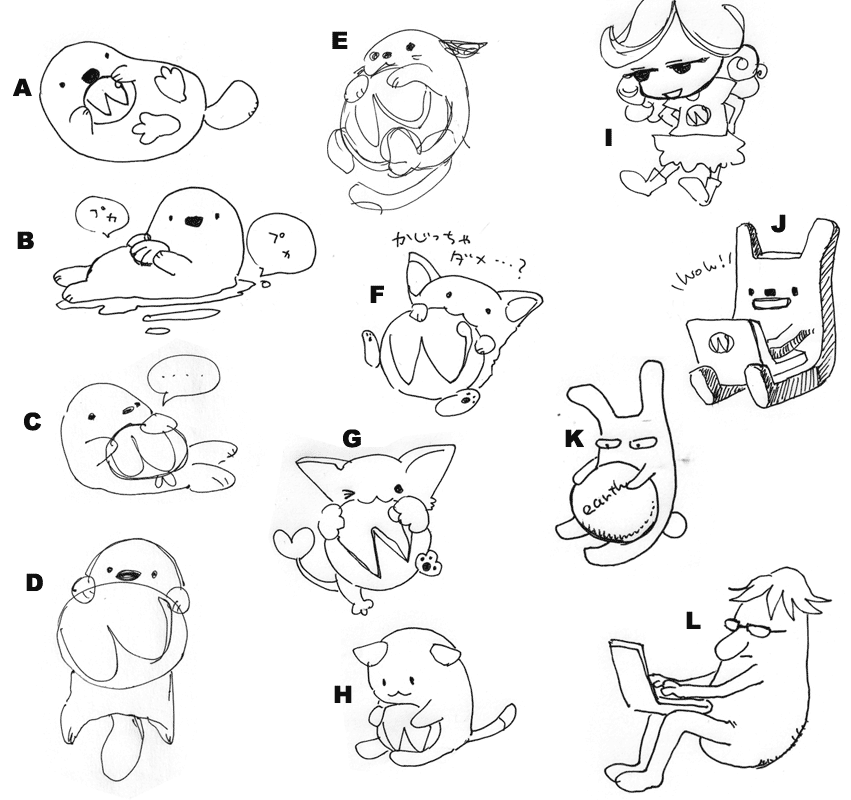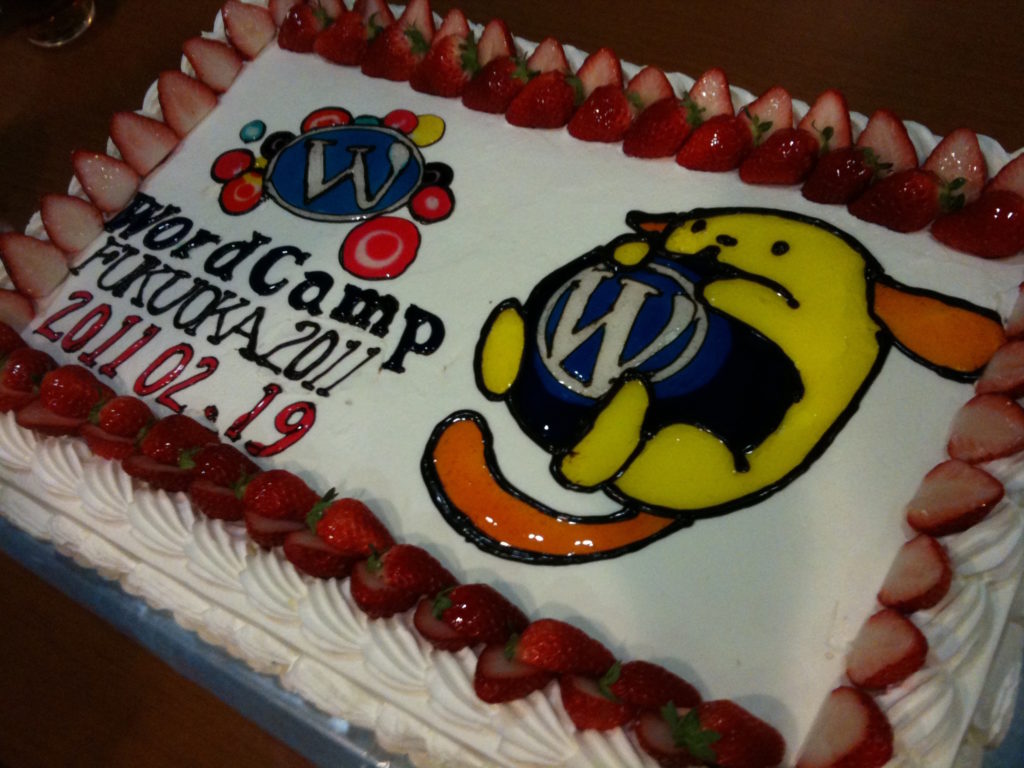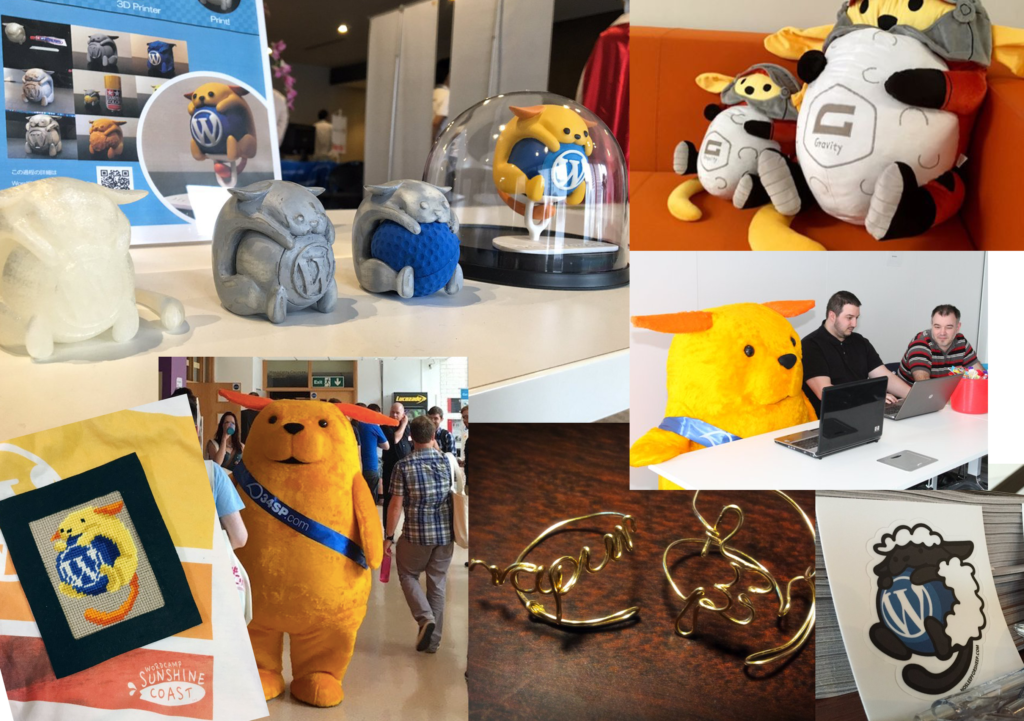Wapuu Origins
How did Wapuu come to be? Where did this adorable little cartoon creature originate from? We’re excited to share the Wapuu origin story with you dear fans!
It All Began at a WordCamp Tokyo After-party
This cute little Japanese monster had its start in 2009 at the WordCamp Tokyo after-party. Matt Mullenweg asked Japanese users for ideas to promote WordPress in Japan. One suggestion was to make a mascot in Japan for WordPress.
At the time, Firefox already had the popular Foxkeh mascot. So the Japanese WordPress community thought it was time for Japan to have its own mascot as well. Matt was excited about the idea—even though Japanese admins thought he was kidding.

A few weeks later, Automattic hired Naoko Takano, a Japanese community manager, as a contractor. She flew from Japan to San Francisco to attend WordCamp SF and explore the mascot idea in detail. Matt encouraged her to work with the Japanese community to make it happen. They hashed out details of illustrations for the mascot that included a “Jazz Cat” idea or using parts similar to Foxkeh. By the end of WordCamp SF, they had decided to go ahead with the idea for a mascot. Next step: pick an illustrator.
Finding the Right Artist
The ja.wordpress.org admins shared names of illustrators they thought would be great for the job, based on style. It was decided to go with Kazuko Kaneuchi. Naoko was familiar with Kazuko’s previous work on OSS mascots (nekobean & basercms) and knew her from the design community in Fukuoka. Kazuko was offered cash and character goods for the project, but she actually designed Wapuu as free gift to the WordPress community.

The First Wapuu Designs
Kazuko quickly got to work. She sent her first drafts of Wapuu to the ja.wordpress.org admins on May 12, 2010. They looked like this:

Next, Seisuke Kuraishi aka “tenpura”—a WP Multibyte Patch developer—added additional suggestions to bring the character to life. Mouth tweaks are seen in the illustration below.
![]()
After some discussion, the ja.wordpress.org admins decided to go with option “E” which today we know and love as Wapuu. Part of the rationale for picking option “E” is they felt it would be the easiest one for users to create variations on. They also appreciated how it was embracing the W logo—rather like holding a globe.
Unveiling Wapuu
The Wapuu character was unveiled on February 19, 2011 at WordCamp Fukuoka and on this blog post. The character didn’t yet have its name, but swag was already showing up.

Wapuu Gets a Name
The next step was to name the character. The Japanese WordPress group organized this poll on August 2, 2011 to collect ideas for naming it. A forum thread with suggestions soon followed.
In just one week, 530 people voted on names. The winner was “wappy”. However, due to a trademark issue, the runner-up “wapuu” was announced as the winner August 12th.
Wapuu Today: He’s Gone Global
Wapuu today is distributed under distributed under the GPLv2 or later and can be modified by anyone to add more personality to the character. Thanks to the freedom of the GPL, there are many forked versions of Wapuu, All local Wapuus are created by local community members, with the little mascot usually holding something that represents its local culture.
Wapuu is so well-loved that the little guy ends shows up on swag everywhere—among WordPress lovers, or just people who like to collect. We see it on cakes, as coffee art, and on pins at WordCamps around the world.

In summary, Wapuu is the greatest thing to happen to WordPress since GPL. He’s fun, he’s tangible, he takes the scary intimidating feeling away from learning programming skills. While originally a mascot for Japanese WordPress community, we can definitely say he’s gone global.
Note: Thanks for all the great research https://wapuu.jp — it’s much appreciated!
